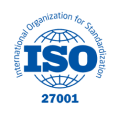

In the shadow of outdated systems, the company's growth stops
Every day we see that old, outdated IT systems are no longer able to adequately respond to the needs of customers and digitalization expectations of the 21st century. As the market increasingly demands speed, flexibility and innovative solutions from service providers — in almost every industry — the modernization of the software used by companies becomes inevitable. Here are some interesting facts and useful advice from the experts at United Consult.
Every day we see that old, outdated IT systems are no longer able to adequately respond to the needs of customers and digitalization expectations of the 21st century. As the market increasingly demands speed, flexibility and innovative solutions from service providers — in almost every industry — the modernization of the software used by companies becomes inevitable. Here are some interesting facts and useful advice from the experts at United Consult.
Today it is no longer a question: a company that thrives on technological progress will be at a huge disadvantage compared to its competitors. Yet 90% of companies are unable to take full advantage of digital technologies due to a spasmodic attachment to legacy systems. According to IBM Modernization of legacy systemsYou can reduce the annual cost of their maintenance and maintenance by 30-50%.

What does ROI say about upgrading legacy systems?
Earlier, we have already written briefly about in which cases it is worthwhile and in which cases it is not worth starting a software modernization project. It is important to know: behind every technological decision there is some kind of business value creation and a so-called ROI indicator. When updating a company's legacy systems, an important question is how the project sponsors, business decision makers interpret the return on investment (ROI), that is: what is the project behind the return on investment (ROI)?
After reviewing the costs during a software modernization survey, a common question is whether it is worth taking this step, since, as is often said by company executives, these systems are still working and serving users in the usual way.
The argument may seem understandable and logical, as some surveys show that 78% of software modernization initiatives fail. However, in addition to reviewing the short-term costs, it is also worth considering the advantages of modernization in terms of competitiveness in the medium and longer term!
To what extent does your current IT system support the company's business objectives?
Discover where your IT system is headed! Take our free survey and get a comprehensive picture of the state of your current IT architecture. Learn about your system's strengths and areas for improvement, and find out how well it meets today's technology requirements. At the end of the survey, you will learn about the obsolescence of your current system, as well as receive personalized proposals for modernization.
It may seem cheaper today, but in the long run the company will definitely pay for it
We always advise our partners to consider software modernization in decision-making not as a current cost to avoid future higher costs, but as an investment that can give the organization a competitive advantage in the market by increasing efficiency and significantly saving IT costs.
The systems currently in operation and serving users and customers in the usual way are able to maintain the current status quo, but they are increasingly resource-intensive and do not support development or innovation. In terms of return, companies must take into account the risks caused by “technical debt”, as well as lost revenues due to developments.

How can modernization give an organization a competitive advantage in the market?
When launching a legacy software modernization project in the company's digital transformation program, it is worth considering the following aspects:
Technological development and flexibility: One of the main reasons for the need for software modernization is the emergence of new technologies. Obsolete systems are difficult to integrate with new technological solutions, which significantly reduces the flexibility and adaptability of companies. Software modernization allows companies to take advantage of the latest developments. Examples include scalability, the use of artificial intelligence (AI) services and the possibility of business forecasts based on instant data, which increase labor productivity and improve the flexibility of companies and market competitiveness.
Customer Experience: Users expect fast, efficient and personalized services — just think about our own personal daily lives. Outdated software can no longer meet these expectations, which has a negative impact on the customer experience and, ultimately, the reputation of the company, and then on its revenues. Software modernization should play a role in improving the user experience, enabling faster, more accurate and intuitive services, which can provide a competitive advantage in the market. When calculating the return, it is also worth considering the increase in customer loyalty through the improvement of the customer experience.
Optimization of business processes: The same advantage is provided by the optimization and automation of processes, the benefits of which not directly, but indirectly increase the competitive advantage of the company by increasing the productivity of the workforce. Instead of routine tasks that can be automated, employees can do other work with higher added value. It is also important to note that today we do most of our work digitally, and the environment in which we work has an impact on our work and thus also on the effectiveness of the company. If the thinking of the workforce adapts to the limitations provided by the old software systems, then this becomes one of the obstacles to the development of the company's product, since narrow frameworks do not allow creative thinking. This is a serious problem, as the disadvantage is accumulating and the company is already lagging behind in the competitive market in the short term. According to Deloitte's report on IT infrastructure development, this is preventing many organizations from increasing real-time transactions and the digital experience, which can be easily exploited by more flexible competition. A factor that improves competitiveness is the ability to optimize processes, which today can no longer be separated from the capabilities of IT systems.
Dynamic response to market needs: Leveraging digital channels and responding to new consumer needs as quickly and accurately as possible is an essential part of product development in all industries and markets. Innovation is key to maintaining competitiveness. Outdated systems hinder this innovation by limiting development opportunities. Modernized software allows the company to respond quickly and efficiently to new market trends, thus gaining a significant advantage over its competitors.
Sustainability: Experts familiar with the operation of old software systems and competent in their development are becoming less and less available on the market. The lack of experts makes the maintenance of systems risky and slows down the process of software modernization. Modernization is significantly faster in cases where expert resources familiar with the legacy system are still available. It is worth starting software modernization while the legacy system experts are still available. Their involvement in the process — and at the same time in the development of the new system — is a very serious advantage. Working together increases the success of the process, while a workforce with valuable knowledge of up to a decade can find new motivation.
Faster data analysis: For modern companies, data is one of the most valuable resources. Legacy systems often isolate data, making it difficult to integrate and analyze it. Modernization of obsolete systems promotes faster data analysis, which supports strategic planning and gaining a competitive advantage.
Increase employee satisfaction: Modern software not only improves the customer experience, but also benefits employees. Outdated systems often cause frustration due to their slowness and limited functionality. These shortcomings add up on the principle of “a lot of little goes to a lot”, multiply by the number of users and cause a detectable loss to the company.
Good leaders recognize the importance of modernization in time
Based on the foregoing, we can safely say, and this is confirmed by UC's more than twenty years of professional experience: software modernization is inevitable to maintain market advantage in the increasingly intensive digital business environment. Companies compete not only for customers, but also for experts, for whom the use of digital assets is a natural part of everyday life.
Technological advances, improving customer experience, increasing IT security, cost-effectiveness and innovation will all help companies stay competitive in 2024 and in the years and decades ahead. Companies that recognize the importance of modernization in a timely manner and are willing to invest in new technologies will remain successful and competitive in the long term.
Then there is only one question left: how to start software modernization? We will write about this in our next post. Don't miss it, follow us on LinkedInand Facebookon our surfaces!
Author: Attila Evanics - United Consult
Literature used:
- https://www2.deloitte.com/content/dam/Deloitte/us/Documents/financial-services/us-fsi-legacy-systems-and-modernization.pdf
- https://www.gartner.com/smarterwithgartner/7-options-to-modernize-legacy-systems
- https://www.edgemiddleeast.com/business/nearly-90-of-businesses-are-hindered-by-their-legacy-technologies
- https://www.ibm.com/consulting/resources/business-continuity-application-modernization
- https://www.couchbase.com/press-releases/digital-transformation-investment-set-to-increase-by-46-over-the-next-12-months-couchbase-research-finds
- https://radixweb.com/blog/application-modernization-statistics#services















